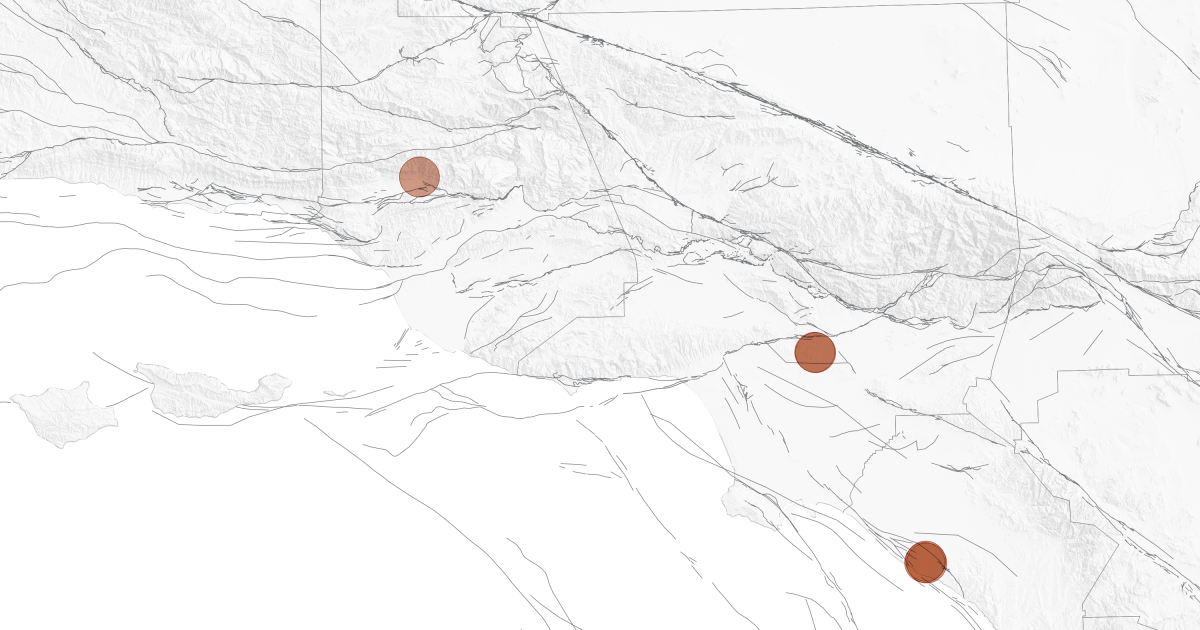Subsurface, 3D mapping of last week’s El Sereno earthquake reveals that it occurred beneath the Puente Hills thrust fault, a fearsome fault that has received less attention than the San Andreas fault but can produce devastating shaking.
A magnitude 7.5 earthquake could strike on the Puente Hills fault, which runs under populated areas of Los Angeles and Orange counties, killing between 3,000 and 18,000 people, according to the USGS and the Southern California Earthquake Center.
That’s worse than the estimated 1,800 deaths from a magnitude 7.8 earthquake that struck on the southern San Andreas fault near the Mexican border and stretched into the mountains of Los Angeles County.
“This is a very large fault and it’s in the worst possible place for a fault to exist beneath Los Angeles,” Dolan said.
The Puente Hills reverse fault was only discovered in 1999 by John Shaw of Harvard University and Peter Schaerer of the Scripps Institution of Oceanography at the University of California, San Diego, who concluded that the 1987 Whittier Narrows earthquake, which killed eight people, ruptured a small section of the fault.
The Puente Hills reverse fault would be of particular concern if it were to be destroyed in its entirety because it lies on large swaths of Downtown Los Angeles, southeastern Los Angeles County, the San Gabriel Valley, and northern Orange County, where many old and unrenovated buildings reside.
“This is huge,” Dolan said.
The fault is like a sloping slope deep underground, with its deepest point about 10 miles deep along the 210 Freeway and its shallowest point about 2 miles below the surface about 1 mile south of USC.
This orientation is especially detrimental if the entire fault ruptures, because shaking typically starts at the deepest parts and moves to the shallowest parts, meaning the shaking energy is more likely to move from the hilly suburbs to the downtown area.
“Where does that energy go? It goes to the top of the ramp,” Dolan said. “And unfortunately, that’s in the heart of the Los Angeles metropolitan area.”
The quake is expected to shake the edge of the Los Angeles Basin, a six-mile-deep, bathtub-shaped hole in bedrock filled with soft sand and gravel eroded from the mountains, creating a plain home to millions of people. The region stretches from Beverly Hills into southeastern Los Angeles County and northern Orange County.
When seismic energy travels through these sedimentary basins, the strength of the shaking is amplified — perhaps 10 times worse than if you were standing on bedrock — and the shaking resonates like a bowl of Jell-O, lengthening its duration, Dolan said.
“So the Puente Hills fault is a particularly dangerous fault for Los Angeles, both because of its location and its geometry,” Dolan said.
The one silver lining, Dolan said, is that unlike the San Andreas Fault, which averages a major earthquake about once every 100 years, the Puente Hills thrust fault only sees a major quake once every few thousand years.

